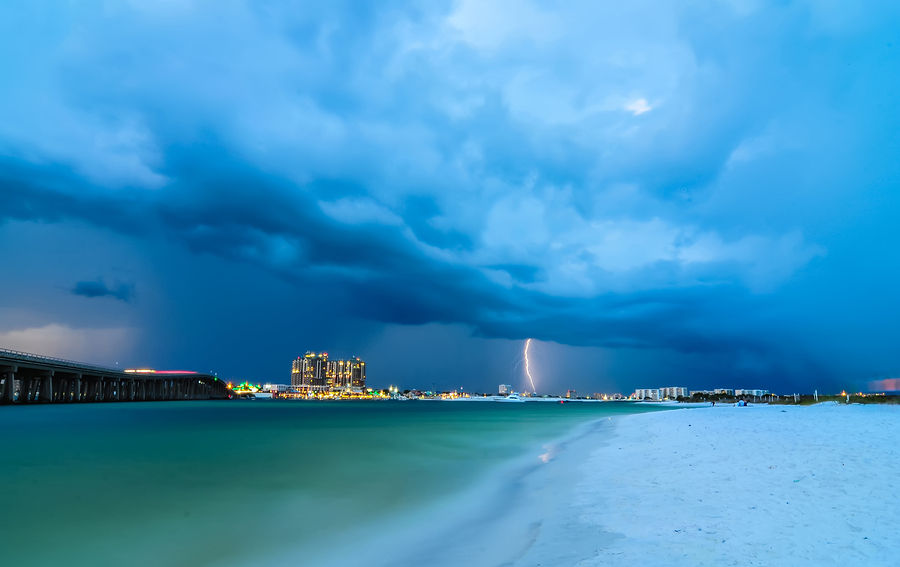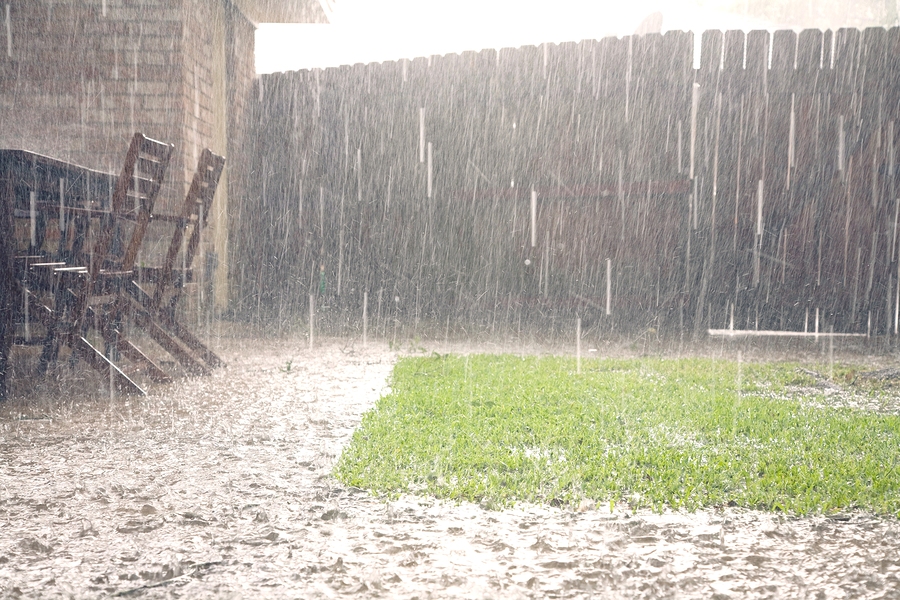Sea Breeze Hazards
The rain from sea breeze storms is beneficial in many climates, and these storms typically last 15 to 30 minutes and cause little to no damage. However, in certain situations, they can last for hours and can be accompanied by some weather hazards.
Lightning is an electrostatic discharge that builds up between positive and negative charges that exist in the atmosphere and is produced in all thunderstorms. Some of the bolts stay confined to the clouds, while others make contact with the ground.

Source: digidreamgrafix
Thunderstorms can often produce strong winds, which are more likely to cause damage than from the winds associated with tornadoes. Strong winds that are produced from thunderstorms are called downdrafts: small-scale downward movements of air in a cumulonimbus cloud. Downdrafts are generated when cold dense air sinks to the bottom of the thunderstorm and is ‘dragged’ out by precipitation. A thunderstorm is categorized as severe if the winds are over 58 mph.

Source: photoprof
Although heavy rains occur in tropical storms, hurricanes, and even ordinary thunderstorms, most flash floods are caused by slow-moving or stationary thunderstorms or thunderstorms that repeatedly move over the same area, which is called “training.”

Source: Nosnibor137